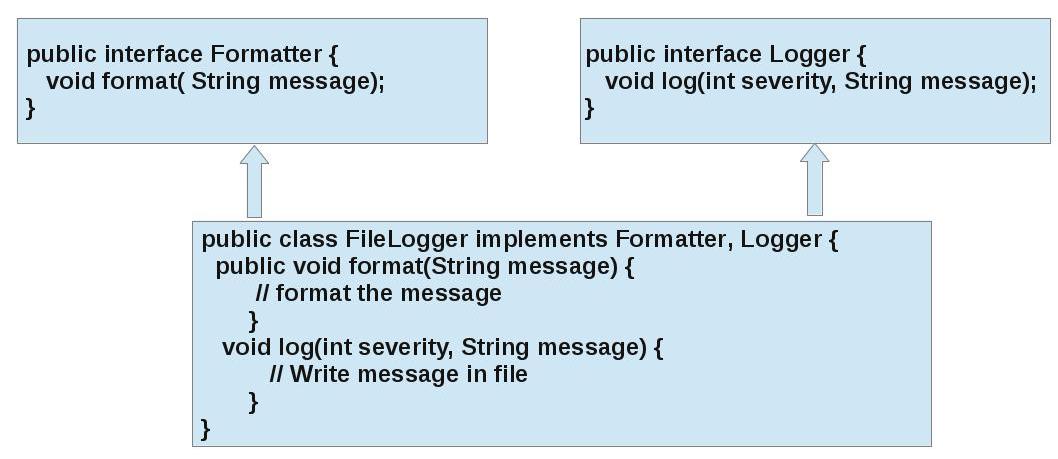Interface in Java is a concept to separate contract (what) from implementation (how).
The keyword interface creates an entity which defines how a class is going to look like with method names, their list & type of arguments and their return type. Interface does not define any method body.
One or more classes can implement the interface to provide the actual method body for all the methods declared in the interface . Since interfaces do not contain any method body, Java does not allow creation of objects of interface. Objects can be created for class that implements the interface.
Similar to inheritance, when defining class for interface we specify name of the interface it is implementing. Here we use the keyword implements to define the class.
A class can implement multiple interfaces by separating Interface names using comma after the implements keyword. An object of such class can be upcasted to any of the interfaces. This is Java’s way of multiple inheritance which is directly not allowed with extends keyword.
Abstract Class
We have discussed about classes and interfaces, there is another entity in Java called Abstract Class which falls into same category but is midway between class and interface. Mid-way because we can provide definition of some methods (like classes) and leave some as abstract or as declaration (like interfaces). Java does not allow instantiation of abstract class but allows it to be extended like any other class using extends keyword.
In this example, we have created a class TennisPlayer by inheriting from abstract class Person and implementing interface Player. TennisPlayer gets eat() capability from Person but is forced to define work() capability as mandated in same Person abstract class. Similarly, TennisPlayer is forced to implement play() capability of Player interface. Since playing tennis is the work for a tennis player, we reused play as work.
Benefits of using Interfaces & Abstract classes-
- Re-usability: Using inheritance we can design in a way such that code is reused to its maximum. In above example – common activity of a Human like eat is defined in the abstract class.
- Extensibility – Using interfaces we can design applications that are easily extensible in future. In above example – SoccerPlayer can be added easily by implementing Player and extending Person.
Word of caution: Using Interfaces is somewhat tricky because it makes sense to use them only when we have multiple implementations either currently or in future. If there is no scope of multiple implementation in future then its wiser to avoid interface and use a class directly.


